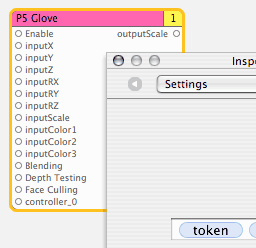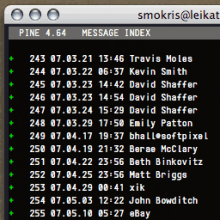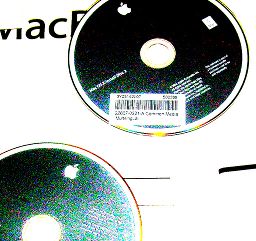Advanced custom Quartz Composer patch development documentation
In addition to writing the inspector panels for custom Quartz Composer patches tutorial, I spent this weekend writing up some advanced custom-patch-development documentation and posted it on QC Wiki:
Steve Mokris is a developer at Kosada, Inc.


 …in thirteen easy steps or your money back.
…in thirteen easy steps or your money back.

 Okay, so, now that the
Okay, so, now that the  In
In 
 Anybody who’s anybody has used an
Anybody who’s anybody has used an